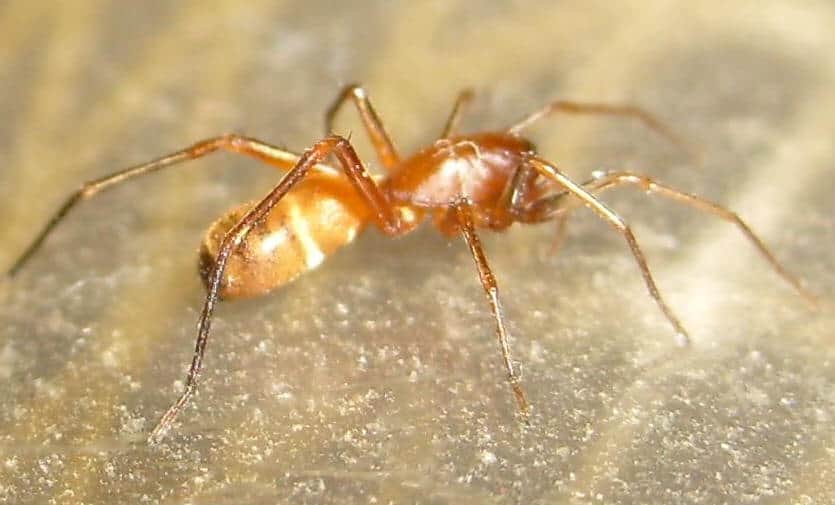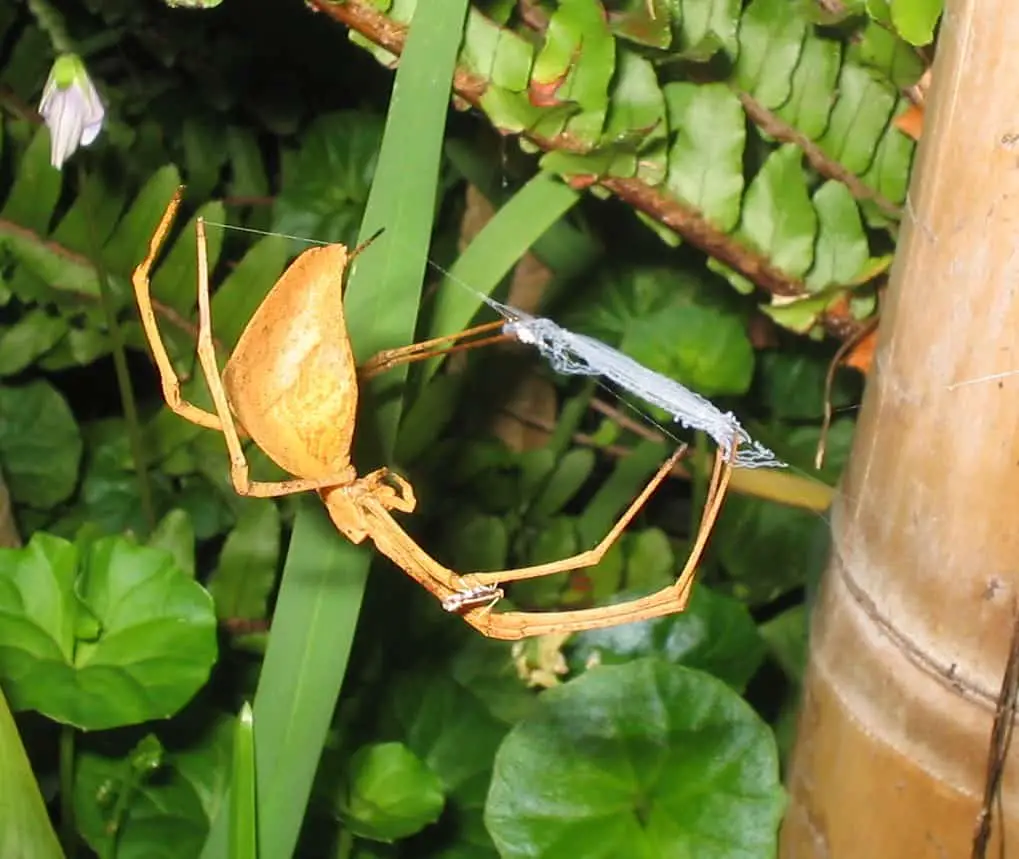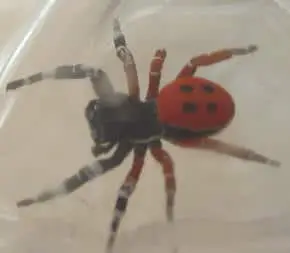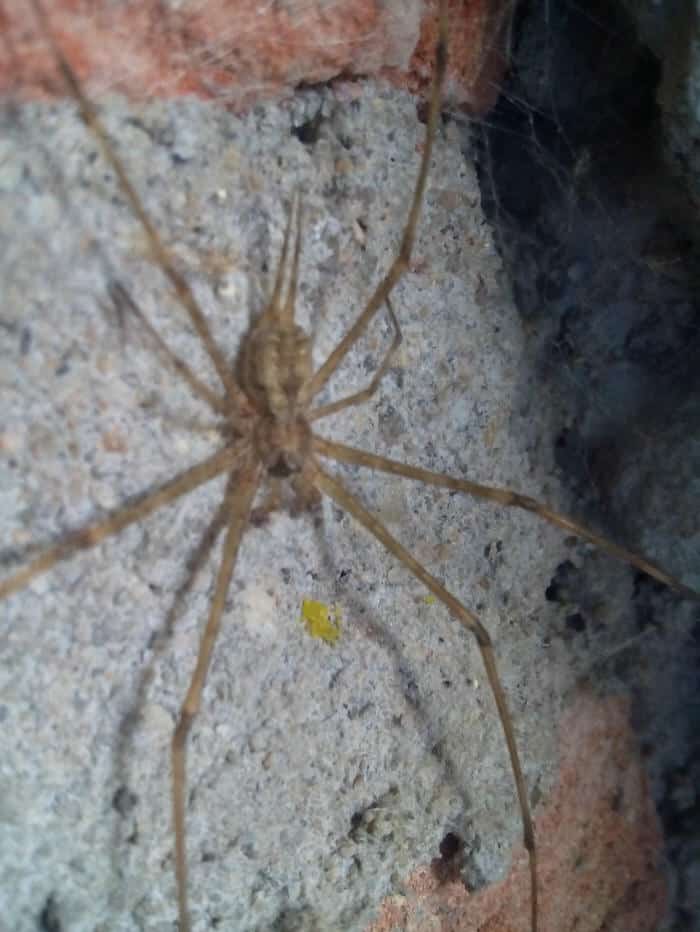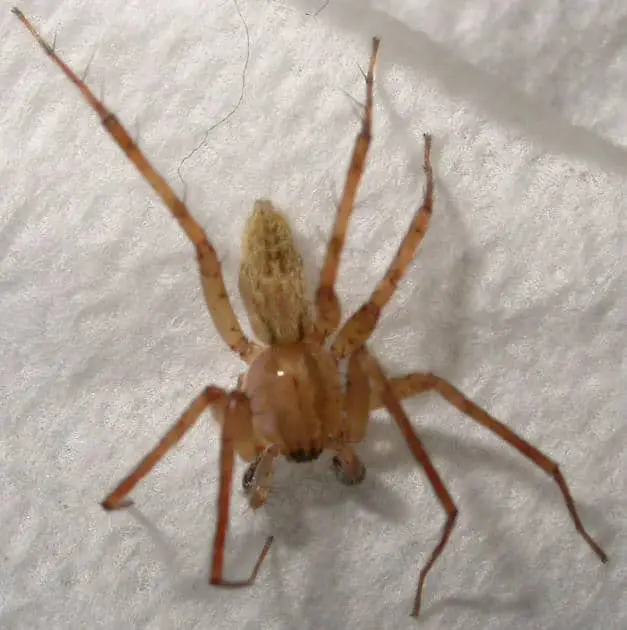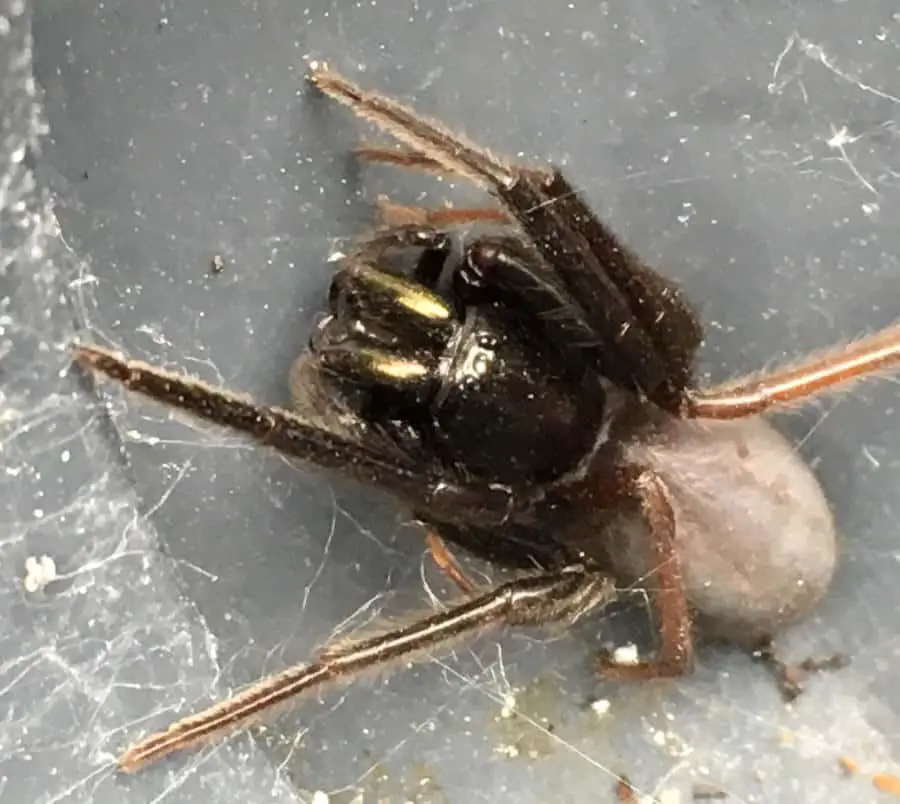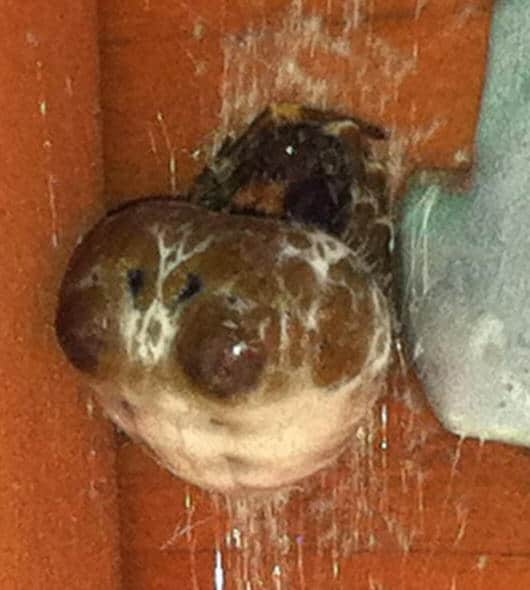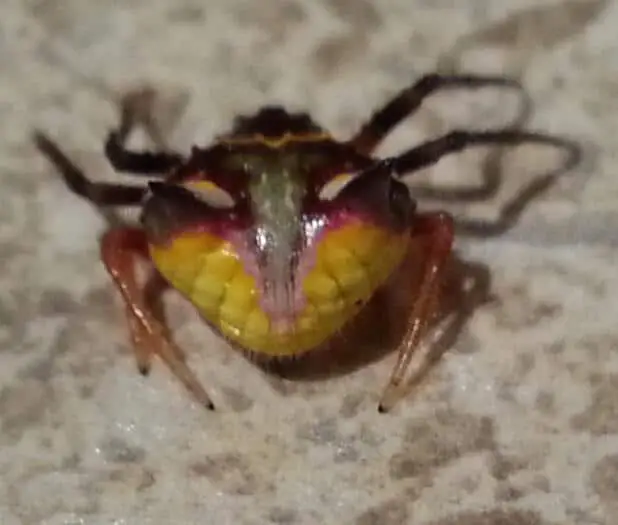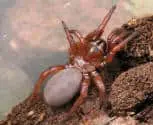There are several different looking spiders that have this name. Ant Mimicking Spiders, Myrmarachne species, in Australia, are members of the Jumping Spider family but in the US some are members of Synemosyna formica species and others belong to Castianeira descripta – the red spotted Ant Mimicking Spider. Here’s some photos sent in by viewers. ANT MIMICKING SPIDERS Wasp Mimicking Spiders
Net Casting Spider – Deinopidae
Deinopidae, also known as Net Casting spiders or Ogre Faced spiders, is a family of cribellate spiders first described by Ludwig Carl Christian Koch in 1850. It consists of stick-like elongate spiders that catch prey by stretching a web across their front legs before propelling themselves forward.The Net Casting spider lives in the warmer parts […]
Ladybird Spider
Ladybird spiders belong to the Eresus species which is a genus of velvet spiders comprising several species, including Eresus cinnaberinus (formerly E. niger) and Eresus sandaliatus, both of which are sometimes known as the “Ladybird spider”. They are mostly found in Eastern and Northern Europe (Info: Wikipedia) Eresus cinnaberinus (formerly Eresus niger) is native to Europe. The taxon “Eresus cinnaberinus” is considered a nomen dubium, the specimens having been divided […]
Purse Web Spider
Purse Web Spiders (Atypus) belong to the sub-order Orthognatha (Mygalomorphae) or primitive spiders and are recognised by their large fangs. Their size varies between 10 and 15 mm. In Europe only two members of this sub-order can be found. In Australia 13% of the spiders belong to the Mygalomorphae. Purse Web spider go back 360 million […]
Tree Trunk Spider
Tree trunk spiders belong to the Family Hersiliidae. There are about 150 species in this family and many more undiscovered. The tree trunk spider is generally a harmless spider and thus is most unlikely to cause significant harm. Female Tree Spiders are around 19mm in body length from its chelicerae to the tip of its spinnerets. When her […]
Ghost Spider
Family: Anyphaenidae Identification: Body 1/4 — 1/2 inch long. Jaws (chelicerae) move side to side, scissor like. Eyes: eight small eyes closely grouped. Abdomen elongate with pair of long spinnerets. Colour: brown and yellow, beige or greenish-yellow; some species with dark markings. Very similar to sac spiders (Families Miturgidae and Clubionidae) and are often mistaken for […]
Segestria Florentina – Scorpion Spider
Segestria florentina is the biggest European segestriid spider. Some common names are tube web spider or cellar spider, although neither are exclusive to this species. Females reach a body length of 22 mm, males up to 15 mm. This species is much darker than others of the same genus. While subadult spiders have a greyish […]
Bird Dropping Spider
The bird dropping spider (Celaenia excavata) derives its name from mimicking bird droppings to avoid predators, mainly birds. However, there are other species of spider that resemble bird droppings, for example species of Mastophora (a bolas spider). The males are much smaller than the females, about 2.5 mm as opposed to 12 mm. The females […]
Two Spined Spider
The Two Spined spider (Poecilopachys Australasia) is a nocturnal spider. It is an immigrant to Australia and has been recorded in New Zealand since the early 1970s. Description: The female, Poecilopachys Australasia is about 8 mm in length and when mature has two white horn-like spines. Yellow and white bands and some red-brown markings are visible. Large body […]
Unidentified Spider Photos
Disclaimer: Replies that I publish are done so with no guarantee of authenticity or validity. Please DO NOT rely on identifications from any other than an official source like a Museum or entomologist. Furthermore, where a spider is described as “not dangerous” does not mean that it doesn’t bite or cause a reaction. Any spider can […]

